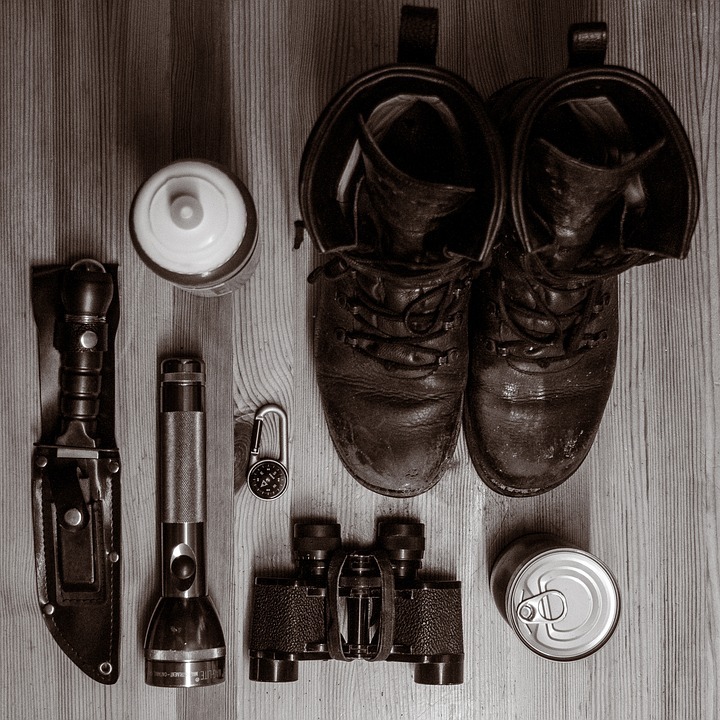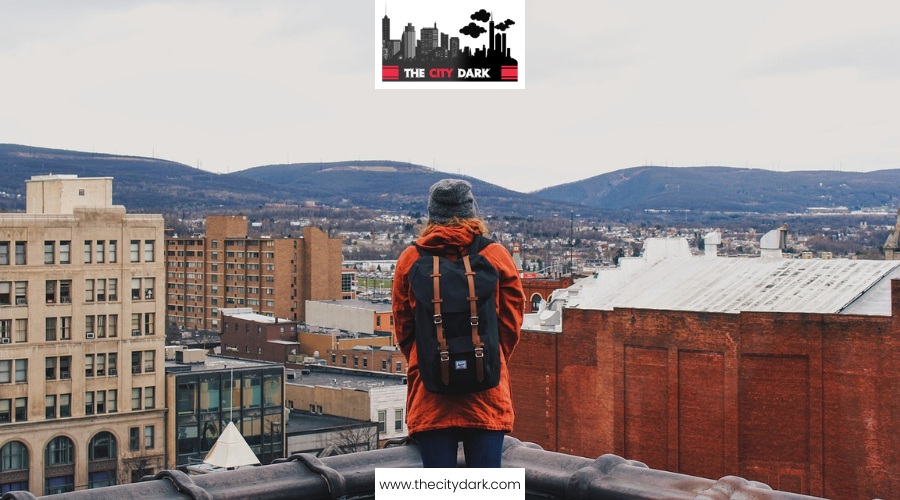Safest Cities in the United States With the Lowest Natural Disaster Risk
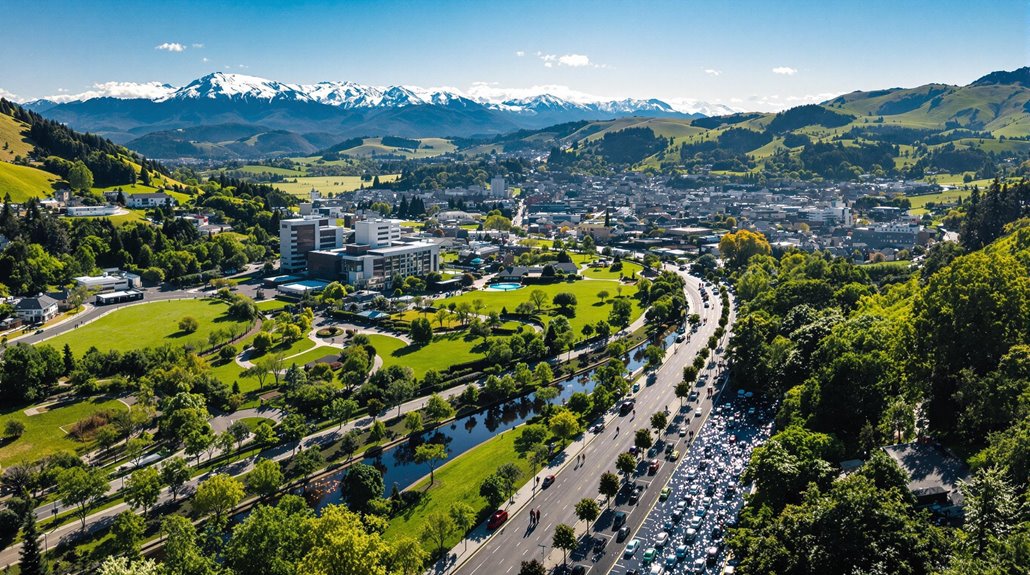
If you're seeking the safest U.S. cities with the lowest natural disaster risk, consider Juneau, Alaska, and Vancouver, Washington. Juneau boasts minimal risk from hurricanes and tornadoes, while Vancouver excels in strategic risk mitigation and infrastructure. Anchorage, Alaska, also stands out with effective disaster preparedness against potential earthquakes. Lynchburg, Virginia, offers robust response capabilities and low flooding risk. Erie and Bloomsburg in Pennsylvania provide low natural hazard scores, though Erie's older infrastructure needs attention. Cities like Morgantown, West Virginia, highlight high resilience and affordability. These places can provide peace of mind, and there's plenty more to investigate.
Criteria for City Safety
When evaluating the safest cities in the United States, understanding the criteria for city safety is essential. You need to reflect on diverse factors to determine which cities truly stand out regarding safety. Central to this evaluation is the natural disaster risk, where cities are analyzed for their vulnerability to events such as earthquakes, floods, hurricanes, and wildfires. A city like Juneau, Alaska, often emerges with the lowest risk due to its minimal exposure to these hazards. Additionally, having a reliable power source is crucial for maintaining essential services and communication during emergencies, contributing to a city's overall safety. Beyond just natural disaster risk, you should also examine the community resilience rating. This metric, weighted at 18.1% in the scoring system, assesses how well a city can prepare for, endure, and recover from disasters. It's imperative to look at how quickly and efficiently a city can bounce back, which is a clear indicator of its general safety. Another significant aspect is a city's emergency response capabilities. A city that can quickly mobilize its resources and efficiently handle emergencies will naturally rank higher in safety evaluations. By focusing on these criteria, you can gain a thorough understanding of what makes a city safe, guiding your assessment of the safest cities in the nation.
Top-Ranked Safe Cities
Diving into the list of top-ranked safe cities, you'll find Juneau, Alaska, leading the way due to its exceptional resilience against natural disasters. According to the National Risk Index, Juneau stands out as the safest city from natural threats, thanks to its low risk of natural events like earthquakes and floods. Following closely are Vancouver, Washington, and Anchorage, Alaska, both of which have robust strategies to mitigate the risk of natural disasters. These cities not only prioritize safety against natural hazards but also emphasize home and financial security.
In evaluating the safest cities from natural threats, a thorough examination of 182 cities was conducted. This examination utilized 41 key metrics, each scored on a 100-point scale, to determine the general risk of natural disasters. Some cities that have excelled in this examination include:
- Lynchburg, Virginia: Known for its strong response and recovery capabilities.
- Erie, Pennsylvania: Demonstrates low natural hazards risk scores.
- Anchorage, Alaska: Offers effective disaster preparedness strategies.
Houston, Texas, however, ranks lowest, highlighting vulnerabilities in areas prone to natural disasters. By understanding these rankings, you can make informed decisions about where to settle based on safety and preparedness. Emergency preparedness and supplies are crucial factors in ensuring resilience against natural disasters, as demonstrated by these top-ranked cities.
Unique Traits of Safe Cities
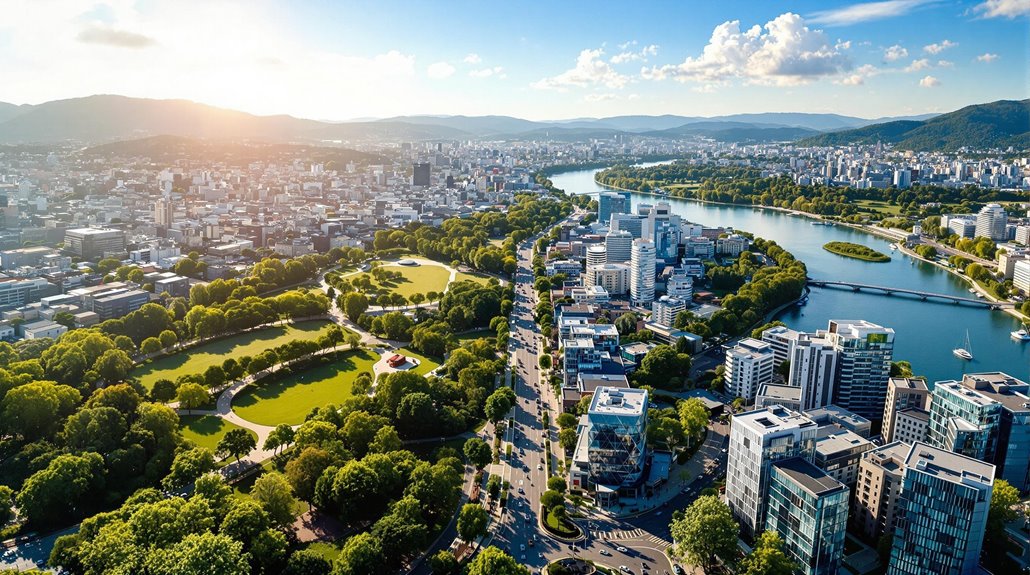
In considering the unique traits of safe cities, you'll find that their common thread is a proactive approach to disaster preparedness and community resilience. Juneau, Alaska tops the list as the safest city, largely thanks to its low risk of hurricanes, tornadoes, droughts, and heat waves. The community here prioritizes awareness and readiness, creating a strong safety net against natural hazards. Vancouver, Washington, follows closely, marked by minimal exposure to extreme weather events. The community's resilience is evident in its strategic planning and robust infrastructure, allowing it to handle potential threats effectively. Anchorage, Alaska, shares a similar low risk of hurricanes and tornadoes but stands out for its preparedness against the higher earthquake risk, showcasing adaptability. Regularly practice disaster preparedness drills to ensure quick and effective response during emergencies. Casper, Wyoming, offers a stable environment with low vulnerability to natural disasters. This stability stems from a community-focused approach to risk management, ensuring that residents feel secure. Meanwhile, Lynchburg, Virginia, is an example of high preparedness levels, particularly regarding flooding risks. The community's dedication to maintaining and improving safety measures underlines its designation as one of the safest cities.
Factors Affecting Risk Rankings
Risk rankings for cities hinge on a mosaic of factors that shape their vulnerability to natural disasters. Understanding these elements can help you grasp why some cities are safer than others. A pivotal factor is flood risk, which can be influenced by geography and climate patterns. Cities like Juneau, Alaska, benefit from low exposure to certain hazards, reducing their comprehensive risk.
Population density also plays a significant role. In densely populated cities like New York, the sheer number of people complicates evacuation and emergency response efforts, increasing the risk profile. Vulnerable populations, such as individuals lacking transportation, heighten risk during disasters. Tailored emergency services become fundamental to address these needs effectively.
Infrastructure lifespan is another significant consideration. Older buildings, including mobile homes, can be more susceptible to damage. Cities like Erie, PA, illustrate how outdated infrastructure can impact risk rankings. It's also crucial to have a communication plan in place, ensuring that family members and emergency contacts can coordinate effectively during a disaster.
Consider these factors:
- Flood risk can drastically alter a city's safety profile.
- Vulnerable populations require specialized support during disasters.
- Infrastructure lifespan affects resilience and recovery capabilities.
Cities with robust response and recovery strategies, such as Miami, often achieve better rankings despite facing significant natural hazards, emphasizing preparedness over mere hazard exposure.
Cities With Strong Resilience
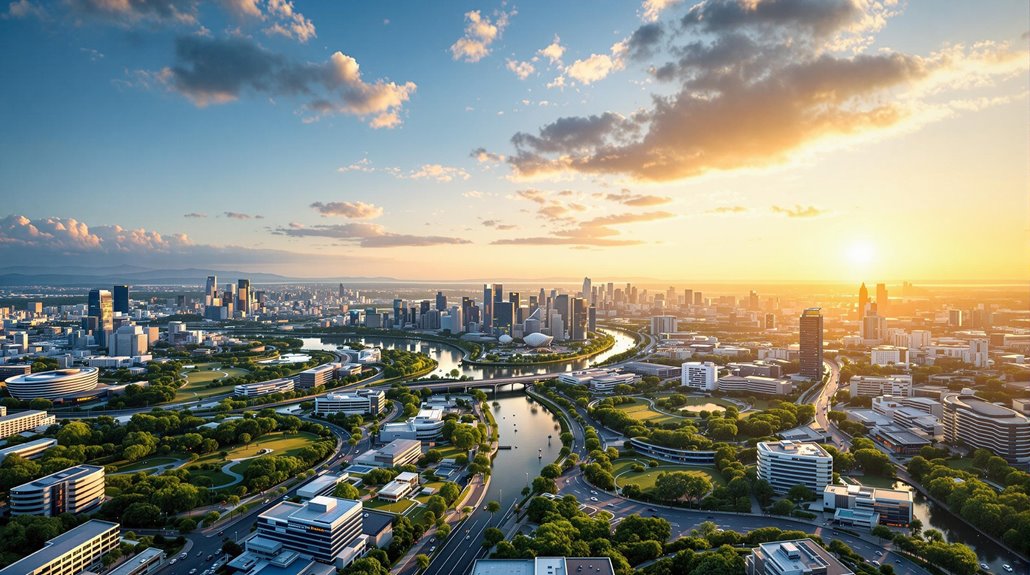
When looking at cities with strong resilience, you'll find that their ability to withstand and recover from natural disasters sets them apart. Juneau, Alaska tops the list as the safest from natural calamities in the U.S., boasting a remarkably low risk of hurricanes, tornadoes, and droughts. This makes it an ideal place if you're worried about extreme weather. In Bloomsburg, Pennsylvania, community resilience is exceptionally high, ranking in the top 3% for low wildfire risk nationwide. This city's proactive measures and tight-knit community dynamics contribute greatly to its strength against disasters. Anchorage, Alaska shares Juneau's advantage with low risks of hurricanes, tornadoes, droughts, and heat waves. Although its community resilience is moderate, its natural defenses are impressive, making it a comprehensive safe choice. Lynchburg, Virginia stands out with relatively high community resilience, particularly due to its lower-than-average flooding risk compared to other southern metropolitan areas. Meanwhile, Morgantown, West Virginia, recognized as the second safest city for natural disaster avoidance, excels with a very high community resilience rating and an affordable cost of living. These characteristics make it an attractive option for those seeking a low-risk environment. Engaging with local prepper groups can further enhance a city's resilience and preparedness through community collaboration and shared resources.
Preparedness Strategies in Action
Although disasters can strike unexpectedly, effective preparedness strategies can greatly mitigate their impact. By focusing on emergency preparedness, you can improve safety in your city. For instance, participating in National Preparedness Month each September offers a chance to review insurance policies and secure your home's outdoor appliances. Such actions are small but impactful steps toward safeguarding vulnerable infrastructure.
Consider the following preparedness strategies:
- Regular maintenance: Clean gutters and downspouts to prevent water damage during heavy rains.
- Community initiatives: Engage in local programs that promote emergency preparedness, which elevates overall resilience.
- Tailored services: Verify emergency services are equipped to aid high-risk demographics, like the elderly or disabled.
Urban areas face unique challenges such as high population density that can complicate emergency responses during disasters.
Cities like Richmond, Lynchburg, and Roanoke in Virginia exemplify how proactive measures can strengthen emergency preparedness. By adopting similar strategies, you contribute to a community's ability to withstand natural disasters. Engaging in community initiatives not only bolsters individual households but also fortifies the entire community. Remember, a prepared city is a safer city, especially when vulnerable infrastructure is addressed. By working together, you can help create an environment where everyone feels secure and ready for unexpected events.
Understanding Vulnerability Factors

Understanding the nuances of vulnerability is fundamental in improving a city's resilience against natural disasters. You need to recognize that vulnerable populations, like the elderly and low-income individuals, are at an increased risk when disasters strike. Tailored emergency response services can greatly reduce these risks, ensuring everyone gets the help they need swiftly. Infrastructure vulnerability also plays a key role. Cities with older infrastructure, such as Erie, PA, face heightened risks because aging buildings and systems might fail under pressure. Mobile homes are particularly susceptible, often sustaining more damage than traditional housing. This suggests that improving infrastructure resilience is crucial for disaster preparedness. High population density poses another challenge. In heavily populated areas like New York, evacuation and emergency response efforts become more complicated, making these cities more exposed. Ensuring efficient emergency services and clear evacuation plans is vital to safeguarding residents. In addition, limiting calls and using text messages can help reduce network congestion and ensure that emergency responders can communicate more effectively. Ultimately, your goal should be to strengthen community resilience. By focusing on improving infrastructure and tailoring emergency response plans for vulnerable populations, you can boost a city's ability to withstand and recover from natural disasters, ensuring a safer environment for all its inhabitants.
Importance of Local Infrastructure
Local infrastructure is essential in determining a city's resilience to natural disasters. You might not realize it, but the lifespan and maintenance of buildings and systems can directly affect how a city withstands hazards like floods and earthquakes. In places like Erie, PA, older urban infrastructure has been linked to higher disaster vulnerability. To improve resilience, ongoing investments are crucial.
Strong infrastructure systems, including robust transportation networks, make a big difference. They allow for quicker evacuations and better access to emergency resources during disasters, enhancing community preparedness. Imagine being in a city where roads are impassable during a crisis—without effective local infrastructure, disaster response efforts can be severely hampered. Environmental impact studies are also important as they assess potential air and water pollution, soil disturbance, and long-term effects on local ecosystems, which can further influence a city's resilience to disasters.
Consider these components that contribute to resilience:
- Emergency services infrastructure: Fire stations and hospitals are vital for effective disaster response and recovery.
- Transportation networks: Facilitate swift evacuations and access to emergency services.
- Infrastructure assessments: Guide planning and funding decisions to mitigate disaster risks.
Implications for Future Residents
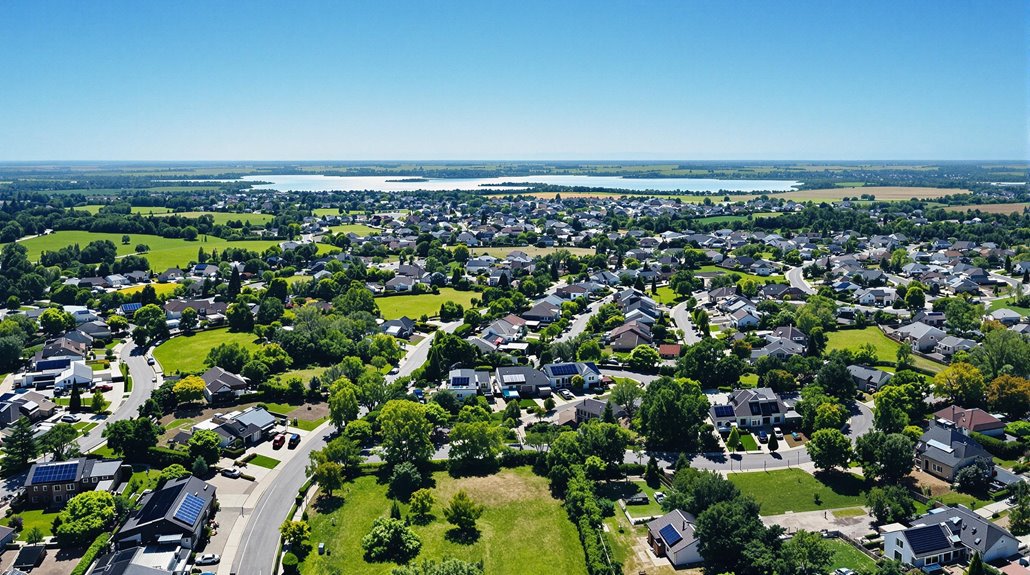
When considering a move, you'll want to prioritize safety, and choosing a city with low natural disaster risk is a smart decision. Cities like Juneau, Alaska, and Vancouver, Washington, stand out as some of the safest in the U.S., thanks to their low natural disaster risk. As a future resident, this means you can enjoy peace of mind knowing you're in a secure environment. In places like Seattle, Washington, where 88.4% of homes are at the lowest risk for natural disasters, you also benefit from a thriving economy and desirable living conditions.
If affordability is a concern, consider Akron, Ohio. With over 91% of homes at the lowest risk for climate disasters, Akron offers affordable housing in a safe setting, making it an attractive option for prospective buyers. Columbus, Ohio, another great choice, provides a family-friendly atmosphere with ample amenities, where 87.7% of homes are at low risk for natural disasters.
Cities like Lynchburg, Virginia, offer low flooding risk and high community resilience. Living in such locations provides you with peace of mind, knowing that you and your family are in one of the safest environments possible.
Enhancing Community Safety Measures
Many communities in the U.S. are taking proactive steps to improve safety measures, guaranteeing residents are better prepared for natural disasters. By focusing on disaster preparedness, cities like Richmond, Lynchburg, and Roanoke, Virginia, have set examples with their effective emergency response plans. You can see how regularly updating these plans, including evacuation routes and shelter locations, elevates community resilience. Establishing robust community support systems is essential, especially for vulnerable populations, as it improves safety and disaster response effectiveness.
Investing in infrastructure resilience is another important strategy. By strengthening flood defenses and guaranteeing emergency services are accessible, communities can greatly reduce risks and improve recovery capabilities. Participating in National Preparedness Month each September provides an excellent opportunity for your community to focus on these efforts.
Consider these actions to improve safety measures:
- Review and update emergency response plans to guarantee they reflect current needs and conditions.
- Build community support systems that cater to vulnerable groups, strengthening all-encompassing disaster response.
- Invest in infrastructure resilience to protect against natural hazards and guarantee swift recovery.
Regular conversations about preparedness with children can build their confidence and awareness, ensuring they are better equipped to handle emergencies.


